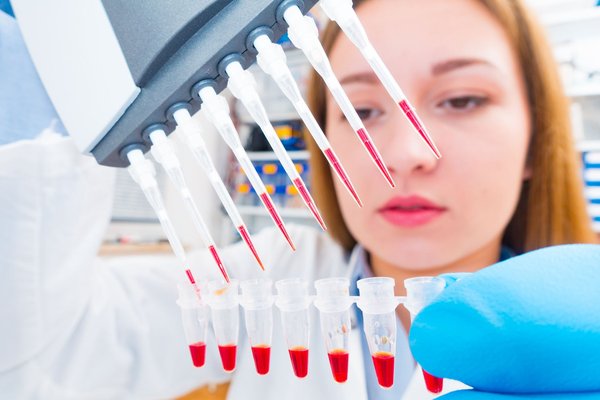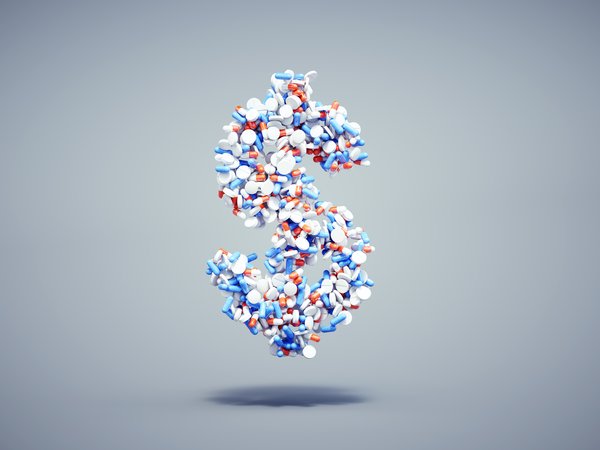Similar yet different. You can probably think of several things that meet this criteria. Butter and margarine. Jaguars and panthers. Jam and jelly. And, for those interested in the prescription drug industry, biotech and pharma.
Some use the terms biotech and pharma interchangeably. However, they’re not exactly the same. The difference between biotech and pharma is that biotech companies make medicines from living organisms called biologics, while pharma (pharmaceutical) companies develop drugs from chemicals.

There are even different regulatory paths for biotech and pharma products in the U.S. Companies that develop therapies made from living organisms must file a Biologics License Application (BLA) to obtain approval from the U.S. Food and Drug Administration (FDA). Companies that develop traditional medicines file a New Drug Application (NDA) to try to secure FDA approval.
Biotech companies
Examples of biotech companies
The COVID-19 pandemic brought several biotech companies into the limelight. Moderna (MRNA -4.04%) and Regeneron Pharmaceuticals (REGN -1.43%) especially stand out.
Moderna developed COVID-19 vaccine mRNA-1273 (later marketed under the brand name Spikevax). This vaccine uses messenger RNA (mRNA) to cause the body to produce proteins that are identical to the spike protein found on the surface of the novel coronavirus SARS-CoV-2. The body then produces antibodies that can fight the coronavirus.
Regeneron’s name might indicate that it’s a pharmaceutical company. However, Regeneron actually meets the definition of a biotech instead.
The company became practically a household name when its monoclonal antibody COVID-19 therapy REGEN-COV2 was used to treat President Donald Trump in 2020 during his first presidential term. Monoclonal antibodies are clones of a single antibody that are made in labs. In the case of REGEN-COV2, the antibody cloned is one that fights the coronavirus that causes COVID-19.
Regeneron also has several other approved monoclonal antibody therapies. The company partners with Sanofi (SNY -0.2%) to market Dupixent for treating diseases including asthma and atopic dermatitis, Kevzara for treating rheumatoid arthritis, and Praluent for treating high cholesterol and reducing the risk of cardiovascular disease. Regeneron purchased Sanofi’s stake in another monoclonal antibody therapy that the companies co-marketed, cancer immunotherapy Libtayo.
Other monoclonal antibodies in Regeneron’s product lineup include cholesterol drug Evkeeza and Zaire ebolavirus treatment Inmazeb. The company also co-markets the eye disease drug Eylea with Bayer (BAYR.Y 0.51%). Eylea isn’t a monoclonal antibody, but it is a biologic.
Pharma companies
Examples of pharma companies
The phrase “big pharma” is often used to describe large pharmaceutical companies. Johnson & Johnson (JNJ 0.22%) and Pfizer (PFE -1.74%) rank as two of the largest of today’s big pharma companies.
Johnson & Johnson doesn’t just focus on pharmaceuticals. The healthcare giant also has a multibillion-dollar medical device business. However, J&J’s biggest moneymaker is its pharmaceutical segment.
The company’s top-selling pharmaceutical products include autoimmune disease drug Stelara, blood cancer drugs Darzalex and Imbruvica, and antipsychotic drug Invega Trinza/Trevicta. Johnson & Johnson’s product lineup also features a long list of other drugs as well.
Pfizer is probably best-known now for its COVID-19 vaccine Comirnaty and oral therapy Paxlovid. But the company has several other blockbuster products. Its Prevnar family stands out as a leader in the pneumococcal vaccine market. The company’s top cancer drugs include Ibrance and Xtandi. Pfizer co-markets blood thinner Eliquis with another big pharma company, Bristol Myers Squibb (BMY -1.36%). And Pfizer’s Vyndaqel/Vyndamax is an enormously successful treatment for a rare type of heart disease.
Related investing topics
Blurring the lines
Blurring the lines
Technically, Johnson & Johnson and Pfizer could also be viewed as biotech companies. Both big drugmakers develop biologics made from living organisms.
For example, J&J’s Stelara is a monoclonal antibody. So is Darzalex. Some of Pfizer’s top products are biologics, including Comirnaty and Prevnar.
There has been an increasing blurring of the lines between biotech and pharma. Many traditional big pharma companies now develop biologics. Some drugmakers refer to themselves as “biopharmaceutical companies” to reflect their focus on both biologics and traditional pharmaceuticals.
To confuse matters even more, some companies that develop drugs that aren’t made from living organisms are commonly referred to as biotechs. As a case in point, the SPDR S&P Biotech ETF (XBI -1.92%), as its name suggests, owns biotech stocks. Vertex Pharmaceuticals (VRTX -2.87%) is one of the exchange-traded fund’s top holdings. But Vertex’s best-selling cystic fibrosis (CF) drug, Trikafta, isn’t a biologic, and neither are the company’s other CF drugs.
It has become widely accepted to categorize all small drugmakers as belonging to the biotech industry even when they don’t meet the definition of a biotech. Sage Therapeutics (SAGE -2.12%), which has a relatively small market cap, is another of the SPDR S&P Biotech ETF’s top holdings. However, Sage’s only approved therapy, postpartum depression drug Zulresso, isn’t a biologic.
Considerations for investors
Considerations for investors
Are there advantages or disadvantages to investing in biotech stocks as compared to pharma stocks? Yes and no.
Big pharma stocks such as Johnson & Johnson and Pfizer typically will be less volatile than smaller biotech stocks. However, this is primarily because of the respective companies’ size and financial strength. It’s likely that a large biotech company will be less risky than a smaller pharmaceutical company that develops traditional medicines that aren’t made from living organisms.
As we’ve seen, some pharma stocks could be viewed as biotech stocks as well, and vice-versa. With the opportunities for mRNA, monoclonal antibodies, gene editing, and other technologies, it’s likely there will be more biopharma companies in the future than pure biotechs or pharmas.
Investors are better off focusing on the long-term prospects for the individual companies, regardless of whether their therapies are biologics or traditional drugs. Evaluate the management teams, markets for targeted diseases, clinical results of pipeline candidates, and the financial positions of the companies. In the end, what really matters is what your potential return could be relative to the risk that you take on.
FAQ
Biotech vs. Pharma FAQ
Are biotech and pharma the same?
Although some use the terms biotech and pharma interchangeably, they’re not exactly the same. The main difference between biotech and pharma is that biotech companies make medicines from living organisms called biologics while pharma (pharmaceutical) companies develop drugs from chemicals.
Is Pfizer a biotech or pharma company?
Pfizer is typically viewed as a pharma company because of its large size. However, it also develops and markets biologics as biotech companies do.
Which is better, biotech or pharma?
There's not a definitive answer to this question. Biotech stocks could be better fits for some investors, while pharma stocks could be better for other investors.
What does a biotech firm do?
Biotech companies make medicines from living organisms called biologics. However, small drugmakers are sometimes referred to as biotechs even when they don't develop drugs from living organisms.















